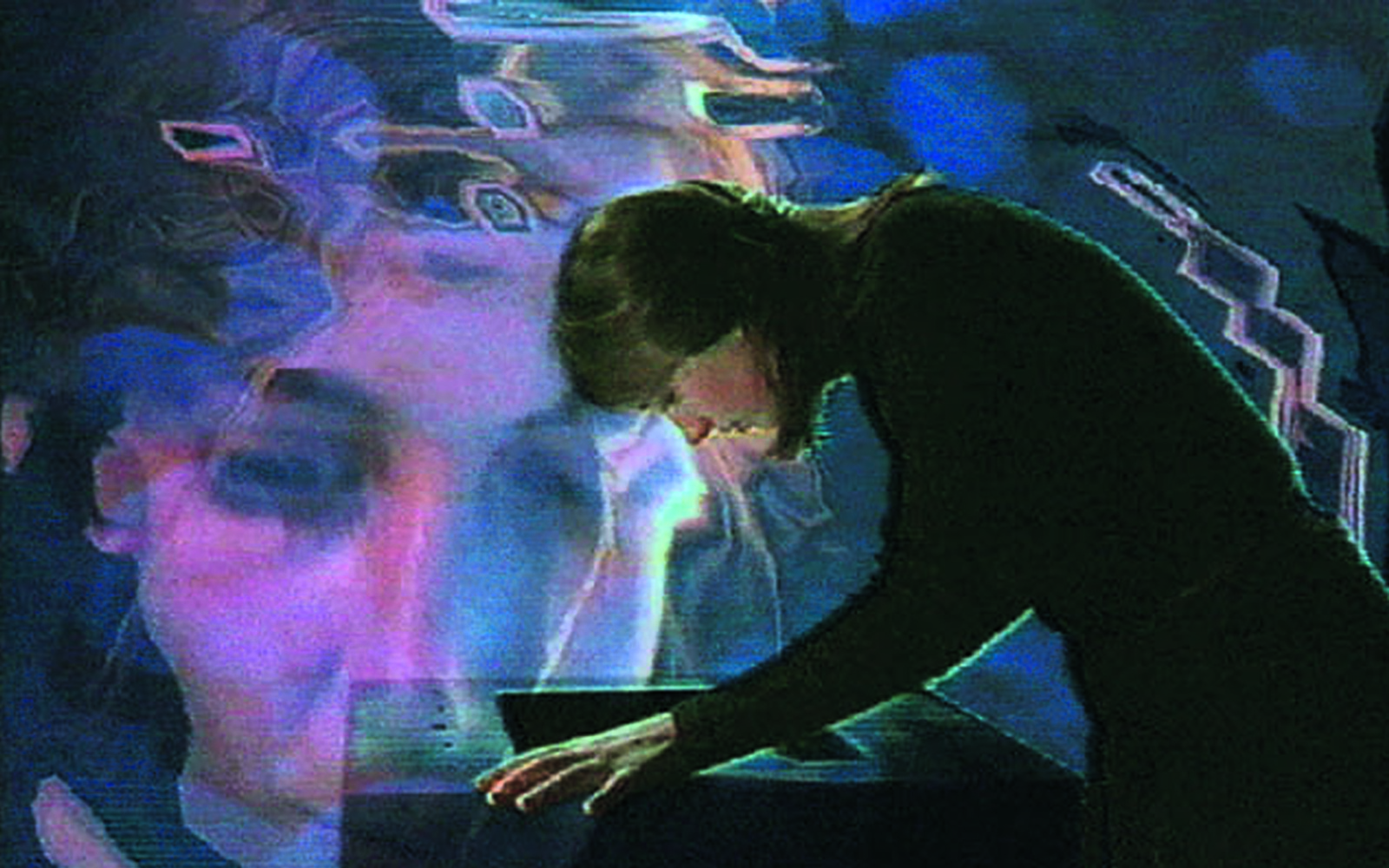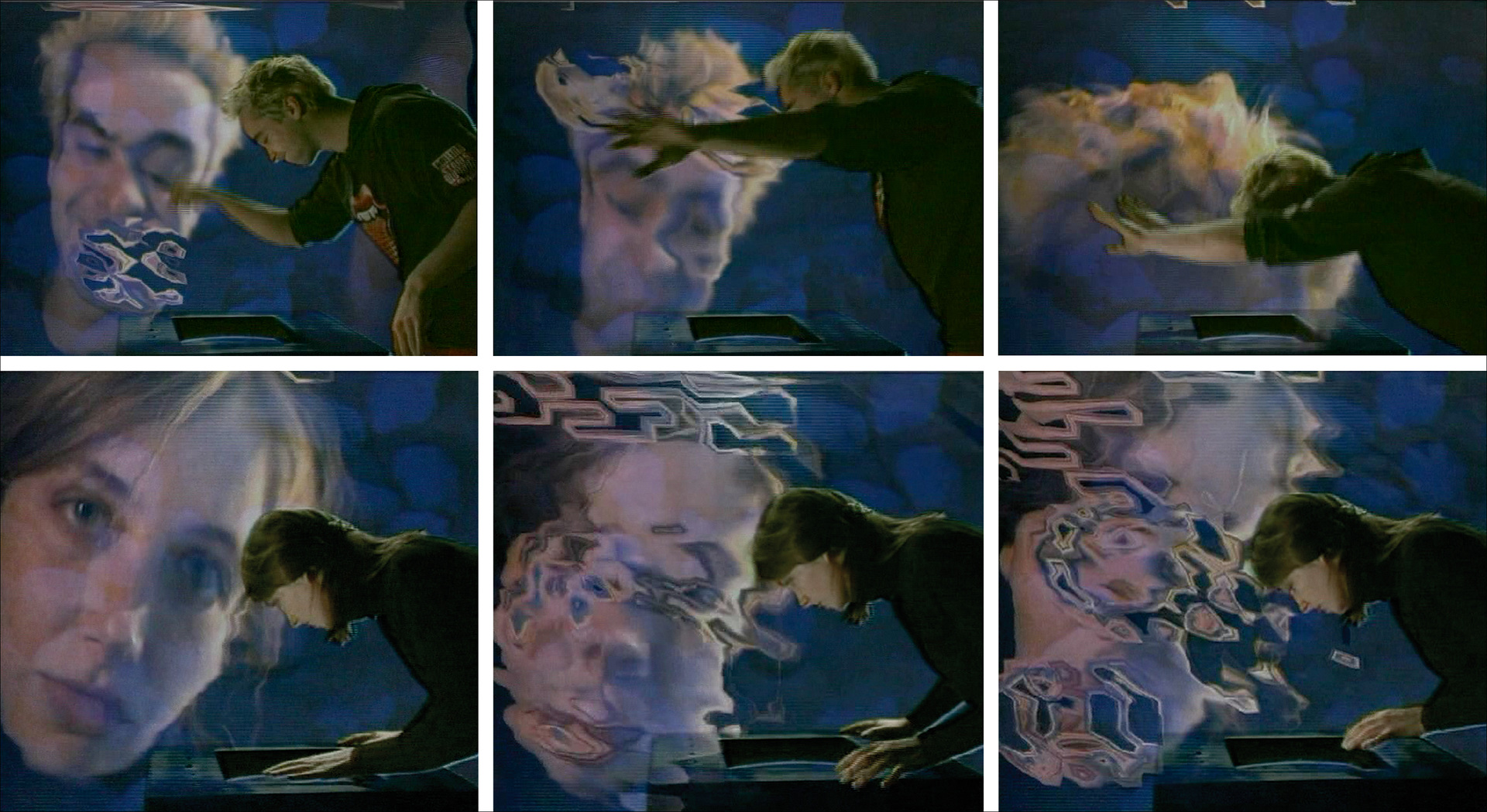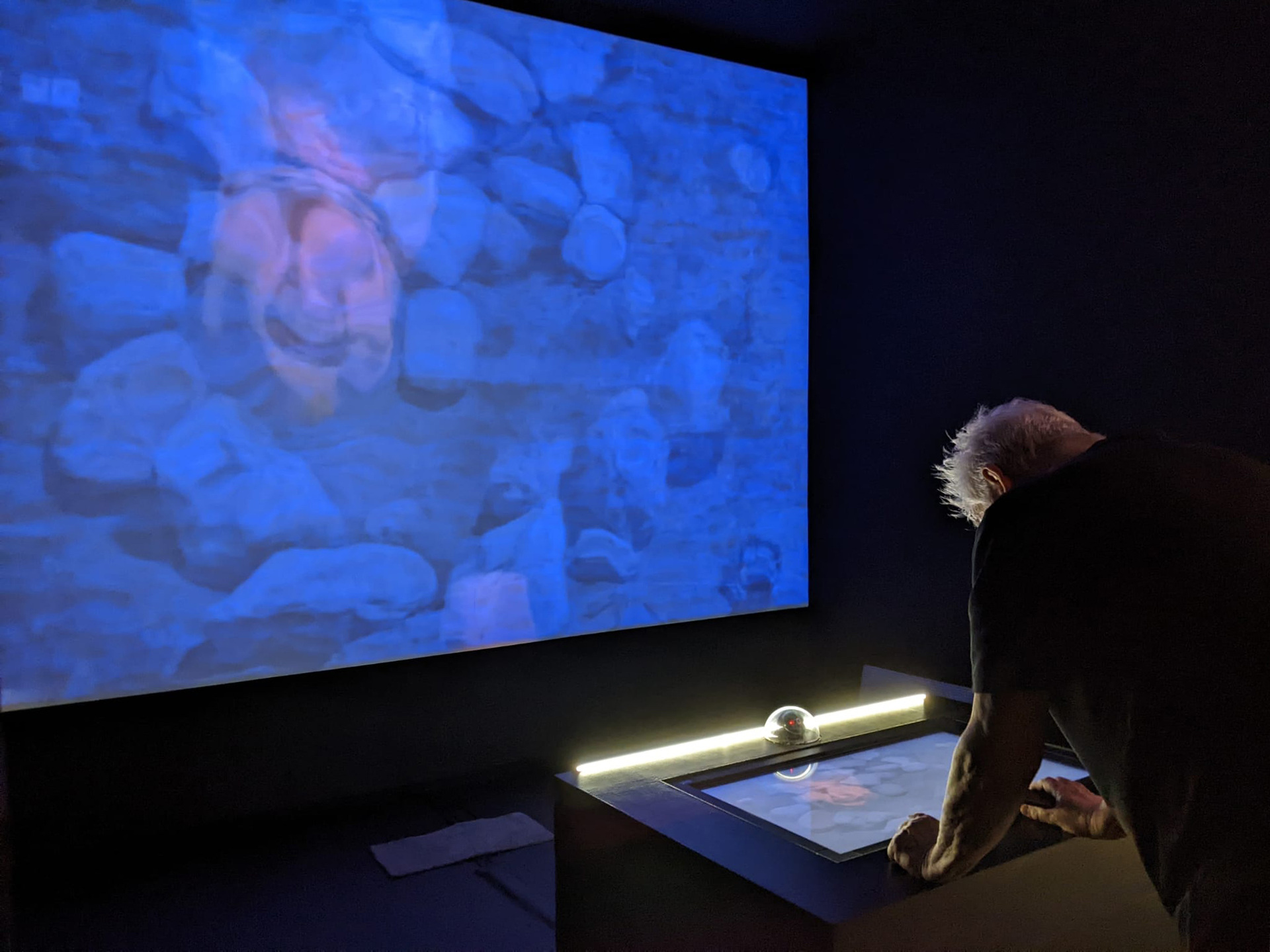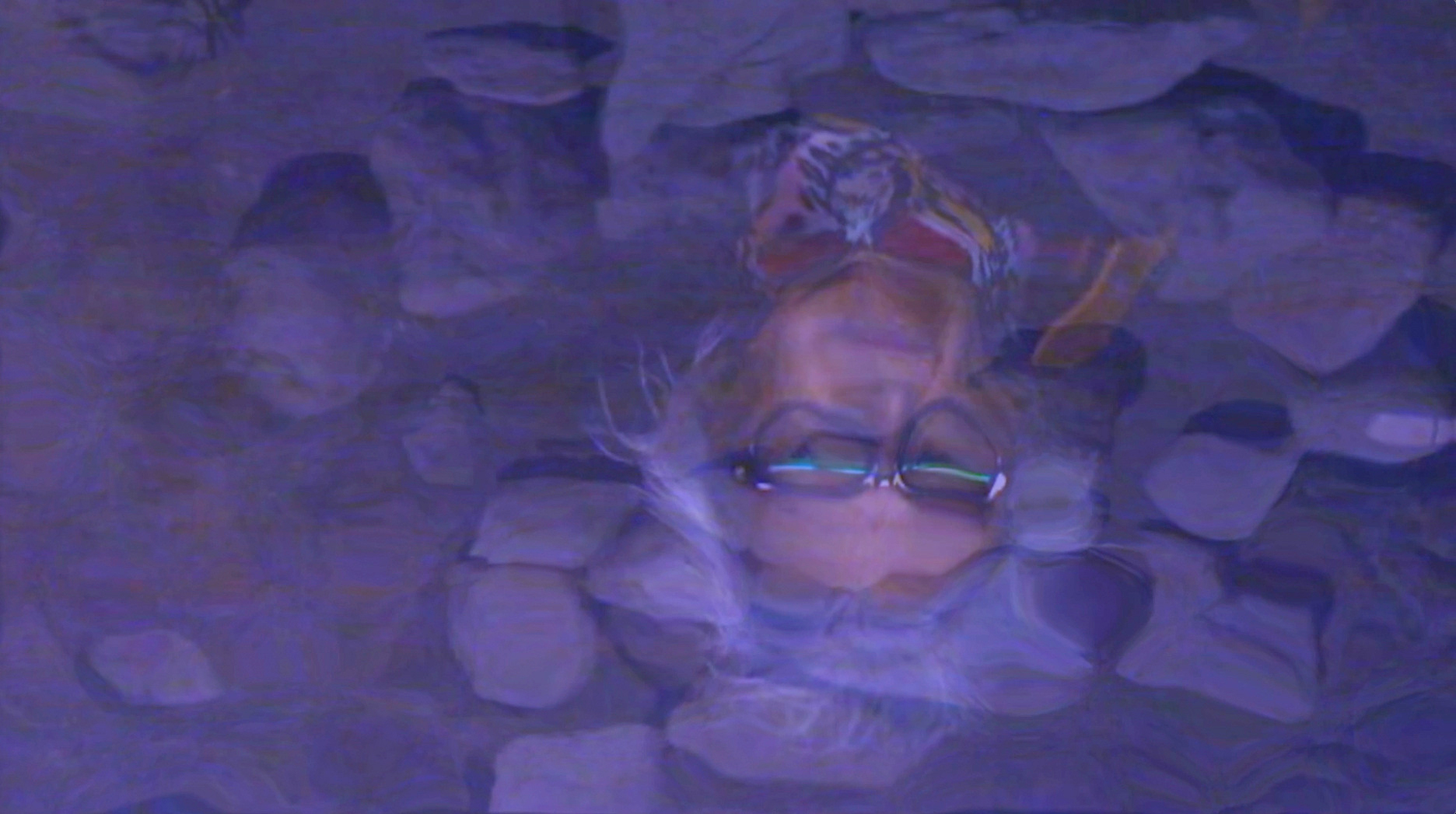Liquid Views
1993
- Artist / Artist group
- Monika Fleischmann, Wolfgang Strauss, Christian-A. Bohn
- Title
- Liquid Views
- Year
- 1993
- Category
- Installation
- Computer-based
- Material / Technique
- interactive installation; touch screen, computer: PC, operating system: Windows XP, individual software, loudspeaker, camera, projection screen
- Dimensions / Duration
- dimensions variable
- Collection
- ZKM | Center for Art and Media
- Description
»Liquid Views« by Monika Fleischmann and Wolfgang Strauss, created in 1992 with the collaboration of Christian A. Bohn, is an interactive computer-based installation. It uses a monitor with touchscreen technology and a camera to simulate a water surface in which viewers are reflected when they lean over the monitor. Touching the touchscreen creates virtual water ripples and sounds. The intensity of the touch affects the distortion of the reflection. After a period of inactivity, the surface calms down and the original image reappears.
The installation draws on the myth of Narcissus, who saw his reflection in the surface of a spring and fell in love with his own face. When his tears fall into the water, the image disappears and Narcissus realizes his mistake. He dies of unrequited love. Unlike the myth, »Liquid Views« transforms the lonely confrontation with one's own image into a public event: the reflection on the water surface is additionally transferred to a large-format projection screen. The personal moment of self-reflection thus becomes an action that can be observed by others.
»Liquid Views« addresses the increasing merging of real and virtual space and the shifting boundaries between the private and the public. The work draws attention to the conditions under which the self is experienced in digital environments and illustrates the effects of this technological transformation on the formation of identity.
The work also points to the ambivalence between human control and the autonomy of complex natural and technological systems. The water surface – a symbol of nature – can be manipulated but ultimately remains uncontrollable. Excessive intervention by the viewer leads to a state of loss of control that takes time to stabilize. This dynamic illustrates the complex relationship between humans and the environment.
The technical implementation was based on the then innovative combination of a touch screen with an SGI Reality Engine – a specialized 3D graphics hardware – and a video camera that inserted its recordings into the simulation in real time. This early use of real-time rendering and texture mapping set standards in the development of interactive media art over 30 years ago.
»Liquid Views« was developed at the GMD research institute (Society for Mathematics and Data Processing) in St. Augustin.



